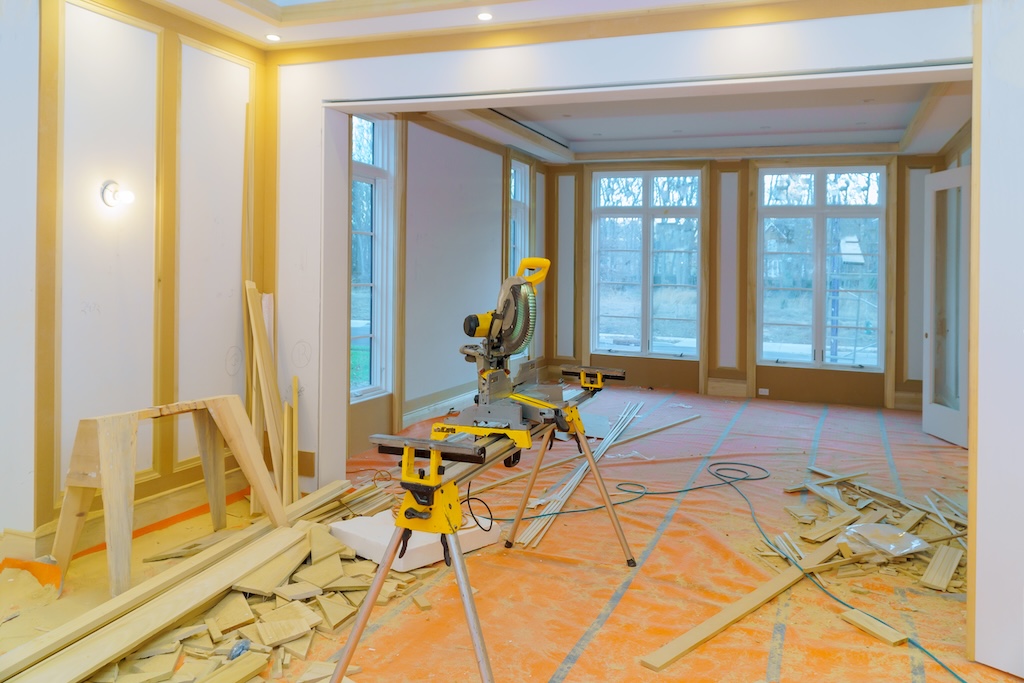Table of Contents
Water damage restoration Process involves restoring a property to its pre-water intrusion state. This process includes inspection, extraction, dehumidification, sanitation, and, if needed, reconstruction. While certification isn’t mandatory, it’s best handled by specialists with the proper expertise and tools.
What is water damage restoration?
Water damage restoration refers to returning a property to its original state before it was damaged by water. The process involves inspections, extractions, dehumidification, sanitation, and reconstructions if necessary. The restoration of water damage does not usually require certification. Still, it should ideally be performed by a water damage restoration specialist with the essential tools and knowledge.
Why is Water Damage Restoration Important?
It is essential to restore water damage because water can cause structural damage and fix it. In many cases, water damage and structural damage go hand in hand, and sometimes, the presence of one indicates the presence of the other. Due to water damage, walls, ceilings, and even floors may collapse.
Addressing water damage as soon as possible prevents mold, bacteria, and pests from taking hold in the long run. Underestimating the importance of water damage restoration reduces the skills, knowledge, and experience needed to handle such a task while endangering the lives of building occupants.
What are the Major Causes of Water Damage?
Finding out what caused the problem you’re trying to fix is only the beginning of the solution. Having a basic understanding of the significant causes of water damage will assist water damage restoration specialists in locating the source when examining a property.
Following are some of the most common causes of water damage:
- Water condensation on air conditioning units
- There are natural disasters (for example, fire) and rainy weather events
- PVC or rubber water supply lines
- A household appliance that is broken
- Blockages in drains and gutters
- Backups from septic tanks and sewers
- Pipes that have burst or are leaking
- Water heaters that are outdated or faulty
- Sprinkler systems that have been damaged
- Water overflowing from toilets
- Sump pumps that are not working
- A lack of efficient roof water drainage
Specialists in water damage restoration should know where and what to look for. Even areas that have not been affected by any of the major causes listed above may still be suffering from water damage. Therefore, a restoration specialist must be capable of identifying the signs of water damage immediately.
What are the Signs of Water Damage?
One of the most essential protocols in water damage restoration is proactively spotting the signs of water damage.
Water damage can be detected by the following signs:
- Materials that are swollen or warped
- Ceiling or wall cracks
- The paint is peeling or bubbling
- A musty or damp odor
- A sagging or soft spot
- Damage to structures
- A puddle of water
- Mildew or mold
- Discoloration caused by water

Water Damage Restoration Process
A water damage restoration specialist typically completes the whole process in five simple steps:
1. A water damage inspection should be conducted
The specialist conducts a water damage inspection or assessment to identify the source, category, and type of water damage.
It has been discussed in a previous section that the water source is a significant factor in water damage.
Although flood water may seep into the property through multiple entry points, it may still be challenging to identify the source of the water in some cases. Following the detection and stopping of the water source, the specialist will determine the water contamination category: wet porous materials such as carpets, gypsum boards, fiber-filled insulation, concrete blocks, and textiles. Low-evaporation Identifying the water damage class is crucial because it indicates the extent of drying and dehumidification needed later on.
2. Remove Standing Water via Extraction
Whenever standing water (also known as stagnant water) exists in a basement, extraction is fundamental to removing it. In addition to industrial vacuums and submersible pumps, there are extractors. Once all standing water has been removed, surface water can be extracted using portable wet/dry vacuums. A moisture meter or infrared thermal camera can reveal hidden pockets of saturation behind walls or underneath floorboards. The presence of residual surface water may also persist after vacuuming.
- Dry and Dehumidify Affected Areas
Like water extraction equipment, specialists use commercial-grade dehumidifiers to dehumidify and dry affected areas. Using these tools, a specialist may also open windows and doors to increase airflow. Generally, dehumidification and drying will take longer than water removal if water damage is Class 3 or 4 and requires the removal of walls and/or floors.

- Clean and Sanitize All Surfaces
Before mold cleanup begins, Personal Protective Equipment (PPE) such as N-95 masks, gloves, goggles, rubber boots, disposable clothing, and protective overalls must be worn. In addition to extraction and dehumidification, the specialist will use a High-Efficiency Particle Air (HEPA) vacuum, an air scrubber, and other negative air machines during sanitation. In Category 3 water damage, all surfaces must be disinfected with an antimicrobial solution.
- Repair and Reconstruct if Necessary
In the final step, a water damage restoration specialist will remove unsalvageable parts (e.g., drywall below the flood line, low- to medium-density trim boards, and carpet padding). Though carpets can be deep cleaned, they are more likely to need to be replaced. Water damage, not Class 4 or Category 3, may allow wooden trim boards to be reused and drywall to be repaired. In some cases, reconstruction is also necessary, especially after a natural disaster has caused water damage.
Water damage restoration can be complex, but following some basic guidelines can help ensure an effective and thorough restoration.
